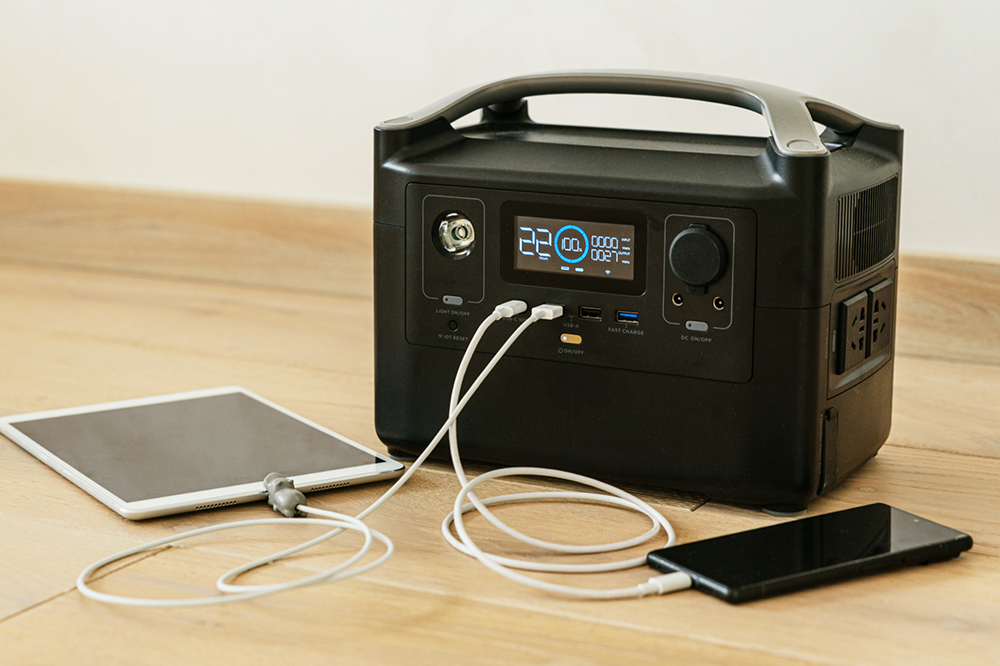
A femtosecond, derived from the Danish word femte meaning ‘fifteen’, is a unit of time in the International System of Units equal to 10-15 or 1⁄1,000,000,000,000,000 of a second; in other words one quadrillionth, or one millionth of one billionth, of a second. A femtosecond is to a second as a second is to approximately 31.69 million years.
Similarly, a femmosecond, from the French femme meaning ‘wife’, is a slightly briefer unit of time equivalent to the twinkling of an eye. It defines the imperceptibly fleeting interval between my wife saying ‘Rory, why on earth have you bought another portable charger?’ and my wife saying ‘Rory, could I borrow your portable charger?’
I am obsessed with portable chargers. In fact the greatest threat to my financial wellbeing is not gambling, divorce or critical illness – it’s the danger that someone comes up with an entirely new connector format called USB-D, at which point I shall have to go out and replace every single device and cable that I own.
But if, like me, you believe that lithium batteries are the new base layer of Maslow’s Hierarchy of Needs – something to prioritise before fripperies such as food, clothing and shelter – then you may be excited to know that, rather than spending a mere £20 on a charger that can recharge a phone, or £80 on a larger version that can recharge a laptop, you can now drop a whole monkey on something that can do practically anything.
Now admittedly, £500 is quite a lot to spend (although, if you pay via Klarna, it is only three payments of £166, which as we shopaholics all know is much, much cheaper). Granted, too, the bloody thing is almost the size and weight of a car battery. Nevertheless the 1-2kWh portable chargers now available from companies such as DJI, Anker and EcoFlow earn my new ‘Japanese toilet’ award for things you didn’t know you needed until you had one.
The greatest threat to my financial wellbeing is not gambling, divorce or critical illness but someone inventing USB-D ports
Just to explain, on the front of these devices, along with the usual USB-C and 12v whatnots, there are several three-pin plug sockets, just like you have at home. Through these, the EcoFlow Delta2 can deliver around 1kWh at up to 1,800W (or more). This is enough to charge a laptop 16 times, or a mobile phone about 85 times. But that’s not the point.
In fact, there are two much better reasons to buy one of these bad boys. First of all, there’s back-up. Last week, we lost electrical power in part of our flat when one of the circuit–breaker switches broke. Annoyingly, this single switch controlled the ring main for our internet router and our telephone. My huge charger gave us 30 hours of back-up electricity for everything – long enough for the problem to be solved.
But the bonus magic is in having 1,800W available anywhere – in the boot of your car, or your summerhouse or folly. You can now do things anywhere which once required connection to the mains. If you want to put a wine cooler or a Nespresso machine or a kettle in the boot of your car, that’s easily done. With a 200W LED light, you can illuminate the bottom of your garden like Wembley. Camping or picnics need no longer be an entirely low-tech affair.
I discovered this when watching a YouTube video made by a long–distance lorry-driver who carries a portable charger in his cab. Every evening, he plugs in one of Elon Musk’s Starlink devices to get high-speed internet access, and then prepares his evening meal in an air-fryer. Bliss.
It’s no coincidence that it was a lorry driver who first introduced me to the value of these things. Generally, the mainstream population are slow to pick up on new technology. If you want to find the next big thing, it’s small groups with unusual needs who discover their value soonest.








Comments